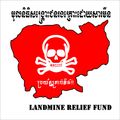Alice Goodman | Disclosures
PARIS — For patients with fibromyalgia, treatment should be individualized and include nonpharmacologic approaches, which are often more effective than drugs, according to an expert in the field.
“There is no magic drug against fibromyalgia and, in my opinion, there will never be. Psychotherapists don’t work miracles, but psychotherapy can help and, in a few cases, turn people with fibromyalgia into nonpatients. Drugs may help, but patients don’t like them,” said investigator Winfried Häuser, MD, from Technische Universität München in Germany, who has published widely on fibromyalgia.
“Aerobic exercise is the most effective weapon we have; healthy people profit from continuous physical exercise, and so do patients with fibromyalgia,” he explained.
Dr. Häuser presented an overview of research on fibromyalgia treatment here at the European League Against Rheumatism Congress 2014.
A Meta-Analysis
Pharmacologic therapies for fibromyalgia include GABA analogues, serotonin–norepinephrine reuptake inhibitors (SNRIs), tricyclic antidepressants, and serotonin-specific reuptake inhibitor (SSRIs). Nonpharmacologic therapies include aerobic exercise, acupuncture, and psychotherapy.
Few head-to-head comparisons of pharmacologic and nonpharmacologic approaches have been published, making the question of which treatments are more effective difficult to answer, said Dr. Häuser.
He and his colleagues recently published a network meta-analysis that was an indirect comparison of all available therapies (Ann Rheum Dis. 2013;72:955-962). They found no significant differences in effectiveness between drug and nondrug therapies.
“Studies may show an effect of drugs, but the effects of drugs are lost once the patient is not taking them,” he explained.
“In contrast, we see sustained but declining effects of aerobic exercise and multicomponent therapy [e.g. psychotherapy and exercise] in fibromyalgia at 1 or 2 years. Cognitive behavioral therapies do have some effect on pain and disability, but these may be small,” he reported.
Treat the Individual, Not the Average
“Results of trials are averages and not representative of individual patient experiences,” said Dr. Häuser. “Some patients obtain little or no relief and others obtain very good relief of pain; the average represents only a tiny minority of patients. The same is true for psychological therapies.”
Treatment decisions should take tolerability, safety, cost, and the patient’s willingness to continue therapy into account, he explained. And treatment should provide substantial pain relief.
“If we really want to know what works in clinical practice, we have to go beyond randomized controlled trials that exclude a lot of patients seen in real-world clinical practice. We need to look at databanks and consumer reports,” he said.
For example, the National Data Bank on Rheumatic Disease contains data on 3123 adults with fibromyalgia who were followed for 11 years. Overall, no improvement was seen for fatigue or functional status, and the improvement for pain was small (0.2 on a 10-point scale).
And a cross-sectional survey Dr. Häuser was involved in revealed some important findings on the most beneficial therapies for fibromyalgia (Clin Exp Rheumatol. 2013;31[6 Suppl 79]:S34-S40).
When patients were asked to list the top 10 most beneficial therapies for fibromyalgia, no drugs were mentioned, Dr. Häuser reported. When they were asked to list what they considered to be the 10 most harmful therapies, they named only approved drugs.
A Graduated Approach
Dr. Häuser advocates a graduated approach to treating fibromyalgia. Mild forms of fibromyalgia can be managed with reassurance from the doctor and encouragement to engage in regular physical and mental activities. Moderate fibromyalgia should be managed with aerobic exercise and the temporary limited use of drugs. For severe fibromyalgia, he recommends aerobic exercise, drugs, and the psychological and/or psychopharmalogic treatment of mental comorbidities.
There are currently 2 streams of thought about treating fibromyalgia: pharmacologic and nonpharmacologic, said Mary-Ann Fitzcharles, MD, a rheumatologist at McGill University in Montreal who treats fibromyalgia patients.
“Nonpharmacologic therapies are probably the most important for fibromyalgia patients. Every patient should be managed with the following nonpharmacologic approaches: exercise, promotion of an internal locus of control, and education,” she said.
It is important not to overdo exercise or to avoid it, she added. “Activity pacing is the key.”
“I agree with the patient-tailored approach Dr. Häuser presented. We should be cautious about overmedicating patients and keeping them on continued medications. We worry about the side effects. Nonpharmacologic therapies have no risks,” Dr. Fitzcharles explained.
Dr. Häuser and Dr. Fitzcharles have disclosed no relevant financial relationships.
European League Against Rheumatism (EULAR) Congress 2013: Abstract SP0061. Presented June 13, 2014.
